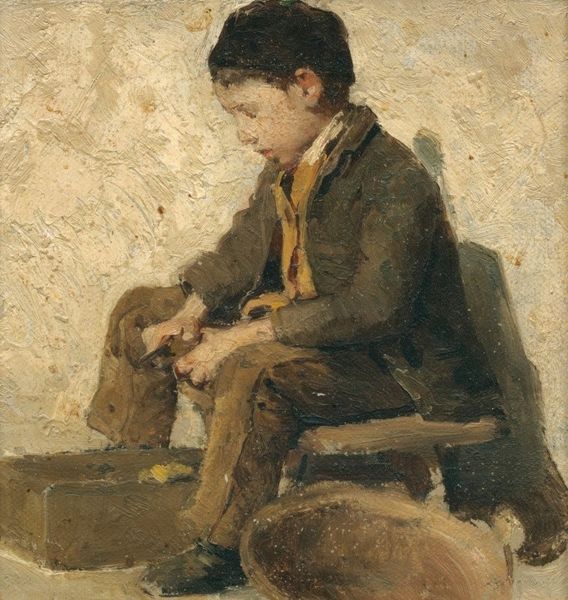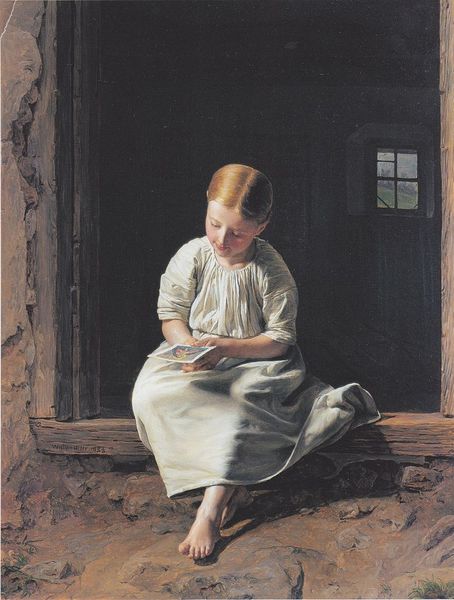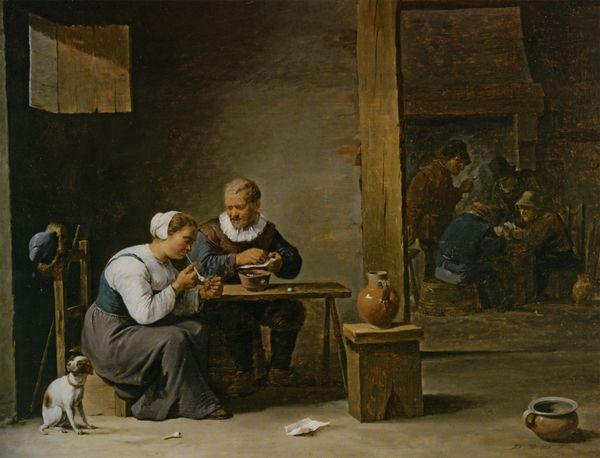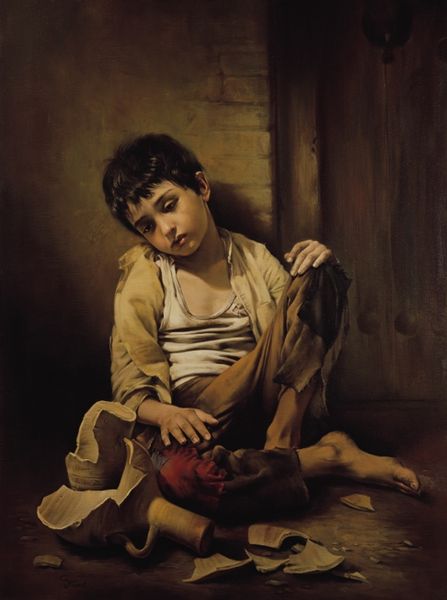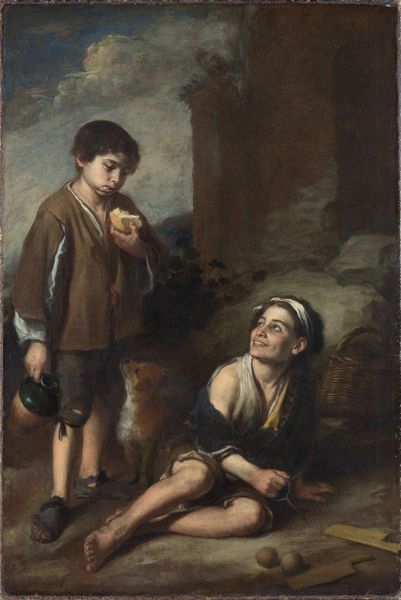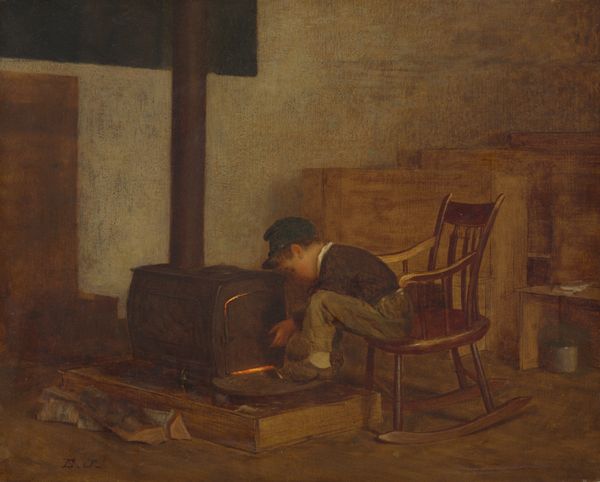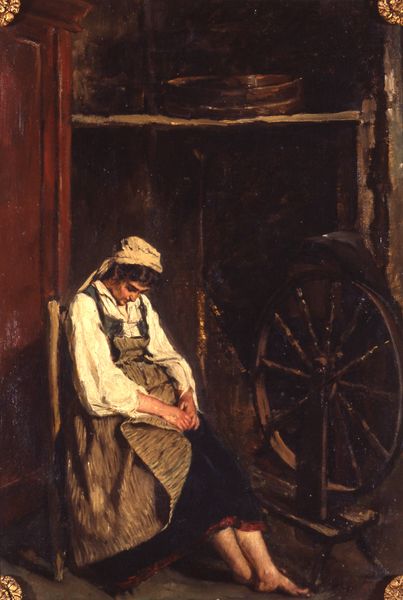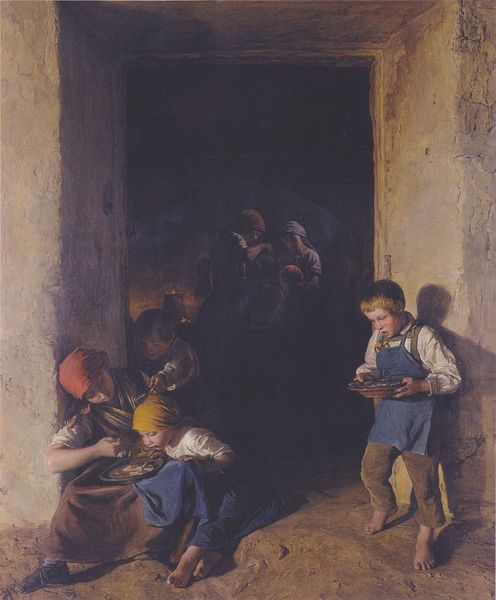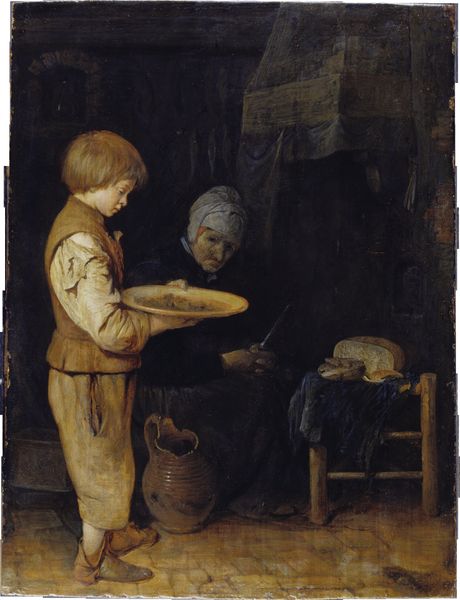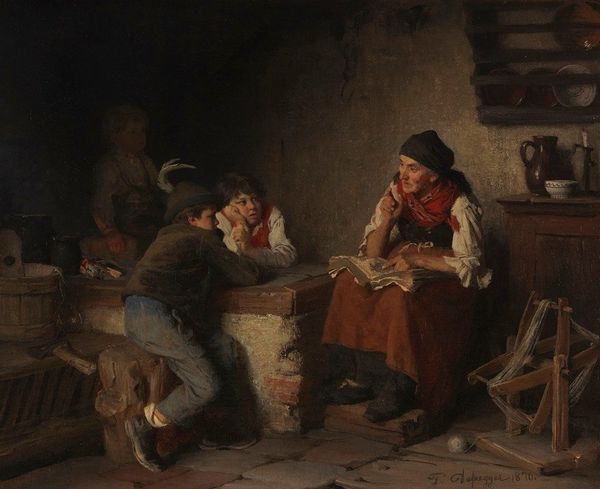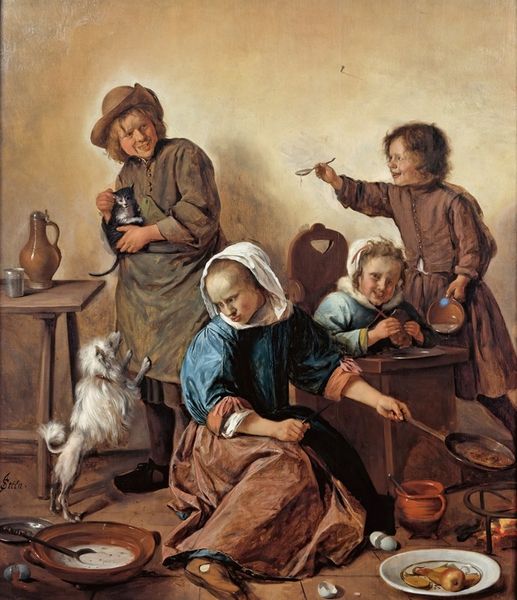
oil-paint, fresco, impasto
#
portrait
#
baroque
#
oil-paint
#
fresco
#
oil painting
#
impasto
#
child
#
underpainting
#
genre-painting
#
realism
Dimensions: 134 x 100 cm
Copyright: Public domain
Curator: Here we have "The Young Beggar," an oil painting by Bartolomé Esteban Murillo, completed around 1650. Editor: My first impression is melancholy bathed in sunlight. He looks so self-absorbed, it is if his interior world is the brightest place around. Curator: Indeed. Murillo’s work frequently touches upon genre-painting, depicting everyday life. I imagine this young boy in Seville, finding solace, maybe even pride, in the act of simply cleaning himself up. Notice how Murillo uses realism to portray his clothing, every tear telling a story of poverty and resilience. Editor: For me it is really about the tactile quality of the work, of its time! The browns and creams are very present. I'm also stuck on how the very construction and materials speak to the economic conditions that underpinned the artwork’s creation – from the sourcing of pigments to the labor involved in grinding them! There is almost something perverse in the luxury object coming from precarity. Curator: A bittersweet point. His works are baroque and his style offers so much, it blends together beauty, but also ugliness, despair and hope. Look closely to the shadows. Do you see underpainting layers, suggesting depth? Editor: Yes, the layering speaks to resourcefulness, using minimal materials for maximal effect. His hand-me-downs feel symbolic. He is very focused and neat, it stands for his efforts of surviving, even with so little means available. Curator: Perhaps. What captures me most is his humanity. His isolation reminds me to reflect on my blessings. This little kid is alone, but he tries to feel better and his environment isn't nice to him. We can almost sense a tender moment, an embrace in an ugly atmosphere, thanks to this painting. Editor: For me, thinking about the social context – Seville at that time, grappling with famine – adds another layer. This image isn't just of poverty; it’s about what kind of things are crafted and shared in a difficult climate. This brings into the question the use of raw materials but it doesn't show us the life cycle of making in general. The economy depends and lives off art and consumption, always. Curator: Yes. So Murillo's "The Young Beggar," through its blend of realism and baroque, offers us a window into not just a moment but a life lived within material constraints. Editor: It also prompts to investigate the role art plays, and to find ways that creation mirrors larger socioeconomic networks.
Comments
No comments
Be the first to comment and join the conversation on the ultimate creative platform.
